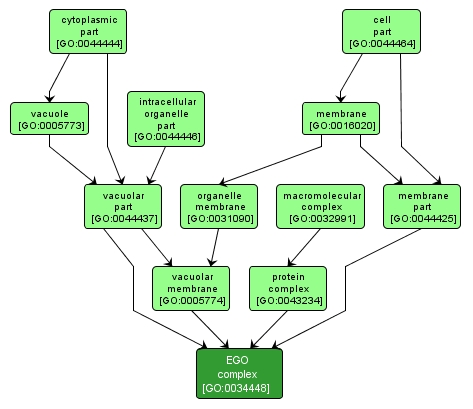GO TERM SUMMARY
|
| Name: |
EGO complex |
| Acc: |
GO:0034448 |
| Aspect: |
Cellular Component |
| Desc: |
A vacuolar membrane-associated protein complex that is required for activation of microautophagy during exit from rapamycin-induced growth arrest. In budding yeast, S. cerevisiae, this complex includes Meh1p, Gtr2p and Slm4p. |
|

|
INTERACTIVE GO GRAPH
|














